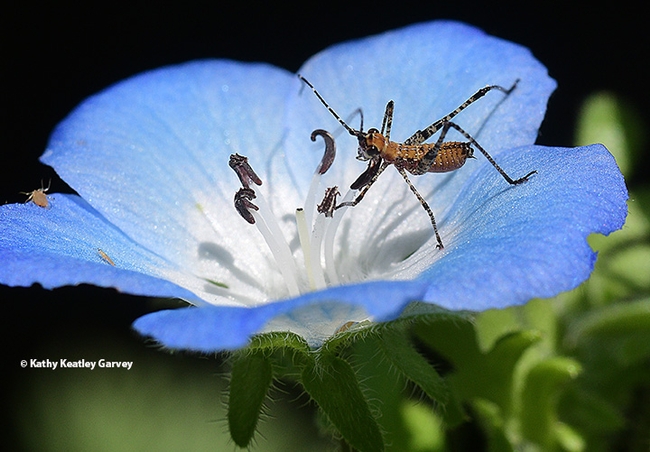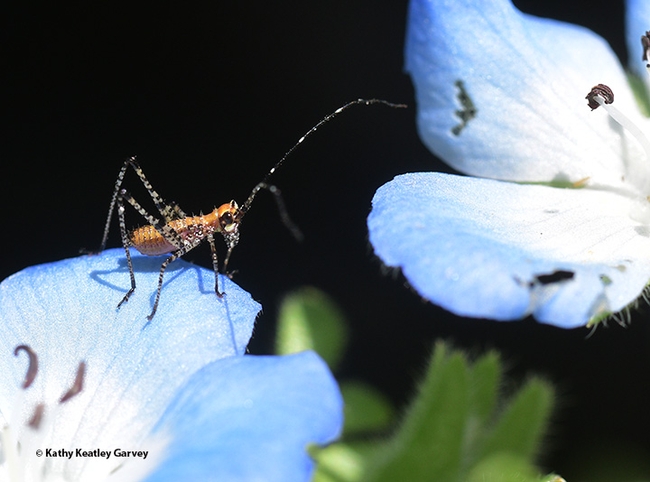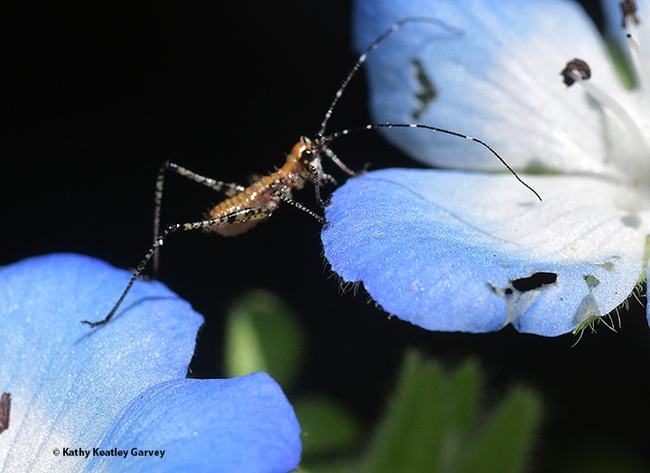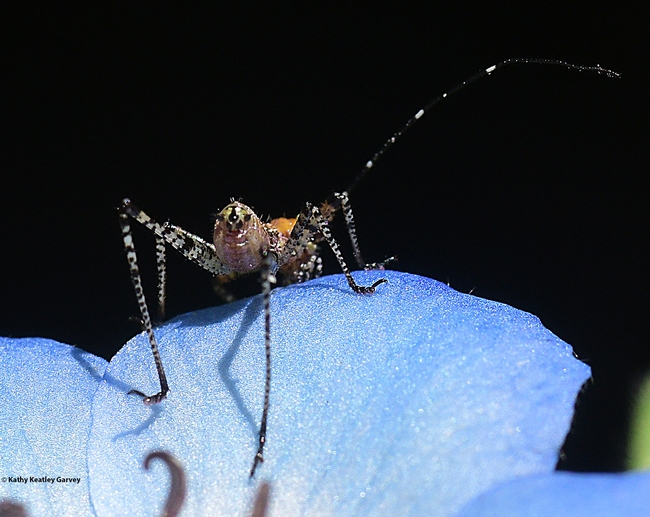In the blink of an eye...
There it was, nestled inside a baby blue eyes blossom, Nemophila menziesii, which is a spring-blooming plant native to California, Oregon and Baja California.
"It?" A katydid nymph, a wingless critter with long black-and-white banded antennae.
The UC Statewide Integrated Pest Management Program (UC IPM) tells us that "nymphs appear in April and May and take 2 to 3 months to mature through 6 to 8 instars."
"At least 74 species of katydids (family Tettigoniidae) are present in California," according to UC IPM. "Most are not pests because they chew only a small amount of foliage before moving to another plant. Forktailed bush katydid (Scudderia furcata) can be a pest because it chews young fruit in addition to leaves. Angularwinged katydid (Microcentrum retinerve) and broadwinged katydid (Microcentrum rhombifolium) are other common species.--UC IPM post on katydids.
This nymph crawled around the blossom, stretched to reach the next one, and then, up and over it went.
Just a day in the life of katydid nymph on baby blue eyes.
Attached Images:

A katydid nymph nestled in a baby blue eyes blossom, Nemophila menziesii, in Vacaville, Calif. (Photo by Kathy Keatley Garvey)

If the grass is greener on the other side, is a baby blues more blue on the other side? A katydid nymph gets ready to move. (Photo by Kathy Keatley Garvey)

A long stretch, and the katydid nymph touches the next blossom. (Photo by Kathy Keatley Garvey)

Up and over the baby blue eyes blossom, and the katydid nymph is gone. (Photo by Kathy Keatley Garvey)